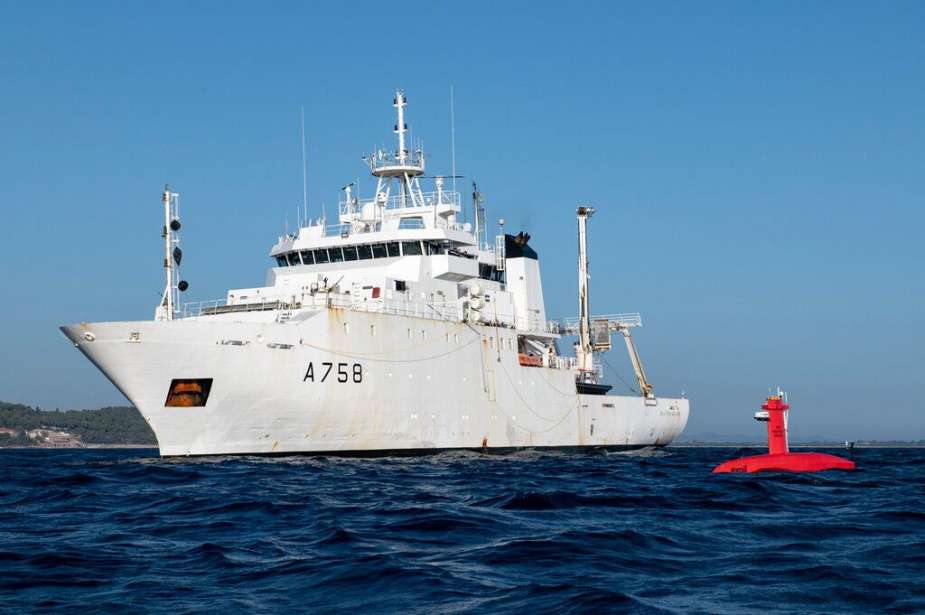Breaking news
Next-gen hydrographic vessel development takes shape in French Navy's partnership with DriX USVs.
According to the French Navy on October 17, 2023, a series of tests involving the deployment of the DriX Unmanned Surface Vessel (USV) took place within the framework of the Future Hydrographic and Oceanographic Capacity (CHOF) program on the Beautemps Beaupré (BHO) hydro-oceanographic vessel. These tests were conducted with the assistance of the DGA (General Directorate of Armaments) and SHOM (French Naval Hydrographic and Oceanographic Service) to identify suitable survey methods that align with the Navy's operational requirements.
Follow Navy Recognition on Google News at this link
 The DriX USV was deployed from the French Beautemps-Beaupré oceanographic survey vessel (Picture source: French Navy)
The DriX USV was deployed from the French Beautemps-Beaupré oceanographic survey vessel (Picture source: French Navy)
The CHOF program, which stands for "capacité hydrographique et océanographique future" or Future Hydrographic and Oceanographic Capability, is expected to result in the development of one to two next-generation hydrographic vessels (BH-NG), four drone systems, and new sensors. The commencement of the implementation phase is currently scheduled for 2023, with the first BH NG expected to be operational by the end of 2025. These new assets are intended to replace the aging La Pérouse, Borda, and Laplace hydrographic vessels, which were commissioned in 1988 and 1989.
The recent tests have been focused on the utilization of the DriX, an advanced Unmanned Surface Vessel (USV). The DriX USV is designed for remote operations while conducting missions with a high degree of autonomy.
This USV can accommodate various payloads within its underwater gondola, supporting operations such as hydrographic surveys, geophysics, scientific monitoring, and subsea positioning (AUV/ROV operations). It offers capabilities for survey and scientific operations, providing survey-grade data quality at high speeds, even in sea state 5. The DriX can function as a force multiplier for traditional vessels or operate independently.
The DriX features seakeeping capability, autonomous operation under human remote supervision, and low fuel consumption due to its efficient hull design. The USV also employs a communication infrastructure to support line-of-sight (LOS) or over-the-horizon (OTH) operations. Its underwater gondola is optimized for reduced acoustic noise and a bubble-free environment, and it includes a launch and recovery system.
The DriX operates with autonomy functions based on the CortiX software framework and offers a user-friendly web-based interface for mission planning and supervision. It can be remotely supervised and is equipped with an Obstacle Avoidance System for enhanced situational awareness and safer autonomous operation, designed to comply with COLREG regulations.
The USV has a track record in supporting AUV/ROV operations for acoustic communication and positioning. It can operate autonomously alongside Exail's FlipiX ROTV and supports multi-DriX collaborative operations.
This USV is the first Unmanned Surface Vessel to be certified by both Bureau Veritas (BV) and Lloyds. The vessel's construction is surveyed by BV, and Exail's team provides extensive support for the authorization process. There is also a dedicated training course for DriX USV operator certification.
The DriX has a displacement of 1.7 tons, a length of 7.7 m, a beam of 0.8 m, and can achieve speeds of up to 14 knots, depending on the payload configuration. Its endurance can extend up to 10 days, and it operates autonomously under human supervision with a robust communication system.























